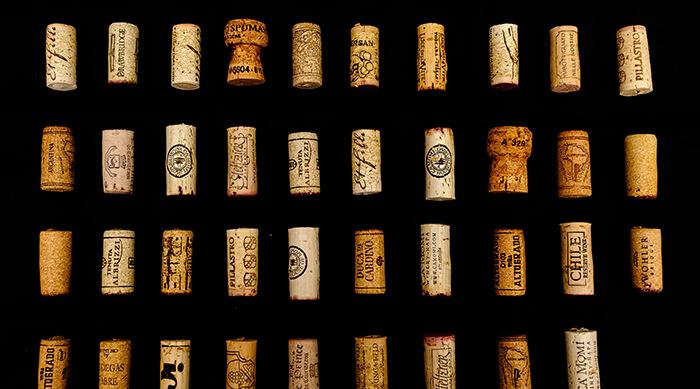Sulfites in wine have been blamed for everything from wine headaches to severe allergic reactions.
This bad rap is why some wine lovers assume sulfites are to blame for feeling unwell after drinking wine. The ruth is, that’s probably not the case for most casual wine drinkers.
In fact, most of the sulfites in your diet probably come from sources outside that glass of wine.
What are sulfites?
Sulfites are chemical compounds made of sulfur and oxygen. Where you’re reading criticisms about sulfites, they’re likely talking about sulfur dioxide (SO2).
Note: We’re not talking about sulfates, which are mineral salts that show up in cleaning products and shampoos. Sulfates used in an industrial capacity have been linked to water pollution and gastrointestinal problems when accidentally ingested.
Sulfates and sulfites are not the same.
Sulfite compounds are found in a variety of foods and beverages. Vinegar, eggs, and black tea all contain natural sulfites. They’re also used as preservatives. Dried fruits and baked goods are some of the most common sources of sulfites.
Basically, they’re everywhere.
When it comes to wine, sulfites are a natural byproduct of the winemaking process.
Why Wine Contains Sulfites
Sulfites are naturally occurring compounds in wine as part of fermentation. This has been true since winemaking on a larger scale became a thing. The ancient Romans used sulfites to sanitize the inside of wine bottles or whatever vessels they’d use for their wine.
What do sulfites do to wine? Sulfites preserve the integrity of a wine and extend its shelf life. They prevent oxidation, which can affect the aromas coming off that wine, and add antimicrobial properties.
When you’re sipping on an aged wine, for example, the winemakers that made that fancy bottle added sulfites to not only keep the wine tasting good, but also to prevent bacterial growth.
If you’ve ever had a funky wine, you know what it tastes — and smells — like. It likely has an astringent or vinegar aftertaste that tells you that wine has definitely gone bad.
What wines have no sulfites? There are no truly sulfite-free wines. Sulfites are naturally occurring in wine. Organic wines or wines with labels that explicitly say “No added sulfites” may be your best bet for wines low in sulfites.
Effects of Sulfites (Good and Bad)
Are sulfites bad for you? Sulfites are generally harmless in most people. In rare cases, they can cause allergic reactions.
For most, though, they come with some benefits. They keep food from browning and medications stable. They also prevent bacteria from growing on things we eat.
A true sulfite allergy is rare. The FDA estimates that less than 1% of the population in the U.S. has any kind of sulfite sensitivity.
Most who experience side effects or an allergic reaction from sulfites are also asthmatic. Even in this group, only about 5% of people with asthma are also sensitive to sulfites.
What are the effects of sulfites? The effects of sulfites include skin reactions like hives, abdominal pain, and worsened asthma symptoms in those with a true sulfite allergy.
Again, these kinds of side effects are very rare. If you don’t feel so great after indulging in some wine, it’s likely caused by something other than sulfites.
Sulfite Headaches & Other Myths
Even for those with true sulfite allergies, headaches aren’t a common side effect of ingesting sulfites. We’re not saying headaches aren’t possible after drinking a glass of wine. Red wine headaches are fairly common.
It’s just probably not because of the sulfites. Histamines in wine may be a more likely culprit. (Although if that’s the case, you should also avoid avocados, dairy, and most citrus.)
Other studies blame the phenolic compounds in wine for any side effects. The same flavonoids and resveratrol content in wine that give you a dose of natural antioxidants may also trigger migraines.
Finally, you may be suffering from something a lot more common when you’re drinking alcohol: good old-fashioned hangovers.
Here are a few more sulfite myths we can dispel while we’re at it:
- Organic wines contain no sulfites. Some organic or biodynamic wines may not have added sulfites, but all wines have naturally-occurring sulfites.
- Sulfites are unnatural. Sulfites occur naturally in both wine and quite a few common food items. We’ve mentioned a few already, but here are some more: Lettuce, garlic, and asparagus all contain natural sulfites. Beer and hard cider do, too.
- Red wines have the most sulfites. Red wines actually have the least amount of sulfites. Wines low in sugar and high in tannins have fewer sulfites than sweet wines low in tannins.
The Sulfites Label
Any wine that includes sulfites at 10 or more parts per million (ppm) must have a label letting the consumer know that the wine has sulfites. You’ll usually see it in all caps on a bottle of wine: CONTAINS SULFITES.
The limit for wines sold in the United States is 350 ppm, but most wines fall in the 80-125 ppm range. Most European wines are comparable to that average.
To put things in perspective, dried fruits, bottled lemon juice, even some lunch meats, and cheeses all have more sulfites than wine.
There have been efforts to reduce sulfites in wine, but researchers are a long way from finding reasonable methods to prevent both spoilage and integrity of wine. For now, sulfites are here to stay, at least when it comes to wine.
Is it safe to drink wine with sulfites? It is safe for most wine drinkers to drink wine with sulfites.
More accurately, it is safe for the vast majority of wine drinkers to drink wine in moderation since you already know sulfite-free wine isn’t a thing.
Wines With Lower Sulfite Levels
Organic wines, natural wines, or functional wines are usually lower in sulfites than the average bottle of wine. Variety matters, too.
Wines with lower levels of sulfites are typically red wines and wines with lower sugar content. A dry pinot noir has fewer sulfites than a sweet wine or rosé.
It gets a little trickier from here because acidity is also a factor.
Wines high in acidity and high in tannins have a lower amount of sulfites. That’s sauvignon blanc and chardonnay, both white wines.
It isn’t easy navigating sulfites, but here’s the good news: Most people don’t have to worry too much about it.
It’s similar to gluten sensitivities. Most people are fine drinking wine with gluten allergies, but trace amounts of gluten in some wines can bother some wine drinkers.
If you think it’s not the sulfites but the alcohol making you feel icky the next morning, healthier alcohol alternatives are always an option.
Try Surely dealcoholized wine for all the real wine taste and none of the adverse alcohol effects. Treat yourself to our classic pinot noir or a non-alcoholic sparkling white if you’re feeling festive.
Sources
- Recent Advances in Metabolic Pathways of Sulfate Reduction in Intestinal Bacteria
- Adverse reactions to the sulphite additives
- Sulfites: Separating Fact from Fiction
- Clinical effects of sulphite additives
- Allergic and asthmatic reactions to alcoholic drinks
- Wine and headache
- Resveratrol: A Fair Race Towards Replacing Sulfites in Wines






